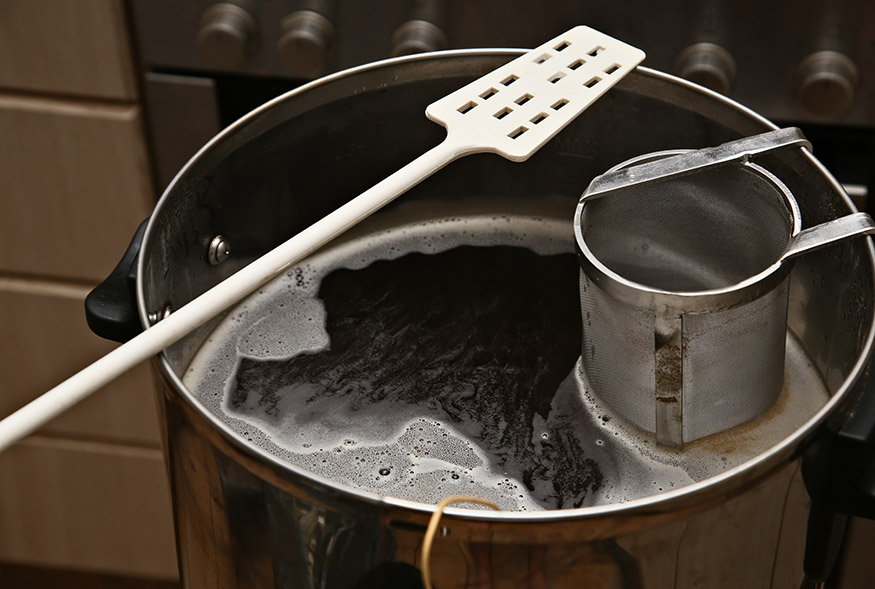As the popularity of craft beer continues to rise, more and more people are turning to homebrewing as a way to experiment with making their own beer at home. One adjunct that his often overlooked and misunderstood by beer enthusiasts is maltodextrin, a soluble and tasteless powder that can be added during the brewing process. Maltodextrin is used to improve the body, mouthfeel, and head retention of beer without affecting its taste or colour.
In this article, we will explore what maltodextrin is, how it is used in brewing, and how homebrewers can use this ingredient to achieve specific textures and flavors.
What Is Maltodextrin / Corn Syrup?
Dextrins are a type of complex carbohydrate that are not easily fermented by yeast, making them ideal for adding body and texture to beer. Maltodextrin is produced by breaking down starch, usually from corn or wheat, into shorter chains of glucose molecules, resulting in a highly soluble and easily digestible powder. The powder is then added to beer during various stages of brewing to achieve the desired level of body and mouthfeel.
Maltodextrin is also commonly referred to as corn syrup.
Maltodextrin is not only used in beer production but also in a variety of other food and beverage applications, such as sports drinks, desserts, and baked goods. Its versatility as a filler, thickener, and binder makes it a popular ingredient in the food industry. However, its most significant contribution is in beer, where it helps to create a well-rounded and satisfying drinking experience.
How Is Maltodextrin Used In The Brewing Process?

During the mashing stage of all-grain brewing, maltodextrin is often added along with other grains. This can help to increase the body and flavor complexity of the beer. Alternatively, maltodextrin can be added during fermentation as a non-fermentable sugar, which will add body without any perceptible sweetness.
For extract brewing, maltodextrin can be mixed into the wort before the yeast is pitched. This will improve the sweetness, mouthfeel, and head retention of the beer. Maltodextrin can also be used to supplement extract kits by increasing the amount of unfermentable carbohydrates in the recipe. This is particularly useful as extract kits generally have lower gravity than all-grain recipes, and adding maltodextrin can help to achieve higher ABV levels.
In recent years, the use of maltodextrin in beer production has come under scrutiny by some purists who believe that it is a shortcut to achieving a desirable mouthfeel and body. They argue that beer should be made solely from water, malt, hops, and yeast, without the use of additives or shortcuts. However, most brewers view maltodextrin as a useful tool in achieving a consistent and high-quality beer, without compromising on flavor or tradition.
Usage Guidelines For Homebrewers
Maltodextrin is a highly useful adjunct for homebrewers. It can be used to add body, sweetness and maltiness to beer without adding alcohol or fermentable sugars.
All Grain Brewing
Typical dosage: 130g – 275g per 23-liter batch (5.6g – 11g per liter)
- Determine how much maltodextrin to use: The recommended dosage for maltodextrin in all-grain brewing is typically 130g to 275g per 23-liter batch (5.6g to 11g per liter). However, the exact amount you should use will depend on the recipe you are using and the desired level of body and mouthfeel.
- Add maltodextrin to the mash: Once you have determined how much maltodextrin to use, you can add it to the mash along with the other grains. The maltodextrin will dissolve quickly and evenly in the hot water.
- Stir the mash: After adding the maltodextrin, stir the mash thoroughly to ensure that it is evenly distributed. This will help to ensure that the maltodextrin is fully incorporated into the wort.
- Mash as usual: After adding the maltodextrin, continue with the mashing process as usual. Be sure to monitor the temperature and pH of the mash to ensure that the enzymes are working properly.
- Sparge as usual: Once the mash is complete, sparge as usual to extract the wort from the grains. Be sure to sparge thoroughly to ensure that all of the maltodextrin is extracted.
- Boil the wort: After sparging, boil the wort as usual. The maltodextrin will not affect the boil or the hop utilization.
- Ferment as usual: After boiling, cool the wort and pitch the yeast as usual. The maltodextrin will not affect the fermentation process or the final ABV level of the beer.
Extract Brewing
Typical dosage: 130g – 275g per 23-liter batch (5.6g – 11g per liter)
- Determine how much maltodextrin to use: The recommended dosage for maltodextrin in extract brewing is typically 130g to 275g per 23-liter batch (5.6g to 11g per liter). However, the exact amount you should use will depend on the recipe you are using and the desired level of body and mouthfeel.
- Mix maltodextrin with the extract: Once you have determined how much maltodextrin to use, mix it into the wort along with the extract. Stir the mixture thoroughly to ensure that the maltodextrin is evenly distributed.
- Boil the wort: If you are boiling your wort, after mixing in the maltodextrin, boil the wort as usual. The maltodextrin will not affect the boil or the hop utilization.
- Ferment as usual: After boiling, cool the wort and pitch the yeast as usual. The maltodextrin will not affect the fermentation process or the final ABV level of the beer.

